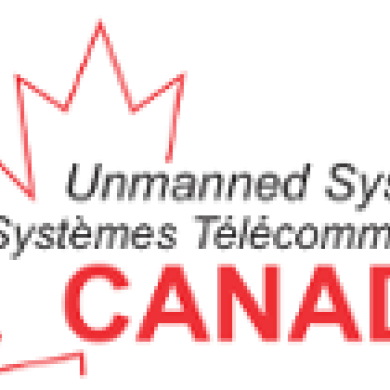May 4, 2020
Montréal Inc | Informations utiles 04 mai
Afficher le courriel dans votre navigateur Read this email in English On vous accompagne dans cette infolettre conjointe de Montréal inc., Bonjour Startup Montréal, Maison Notman et OSMO! Découvrez nos initiatives, celles de l'écosystème, ainsi que des articles qui font du bien. Nos initiatives conjointes Nos webinaires à venir Chaque mercredi, on vous donne RDV à 14h avec des invités de choix ! Voici la programmation des 2 prochains Mercredis Startup : 6 mai 2020 - 14h Robert Dutton, ancien PDG de RONA. Il partagera sa riche expérience de leader en temps de crise, ainsi que sa vision de l'entrepreneur et de l'écosystème startup de Montréal au-delà de la crise. Etienne Lacroix, fondateur et CEO de Vention viendra parler de sa réalité de travail dans le domaine manufacturier en temps de crise. 13 mai 2020 - 14h Rachel Bendayan, députée d'Outremont : le rôle crucial qu'a joué le gouvernement jusqu'à maintenant et sa perspective sur la relance. Francis Davidson, co-fondateur et CEO de Sonder : sa vision de la crise et les opportunités pour son entreprise. Chris Arsenault, Associé, iNovia capital : sa perspective comme investisseur et les tendances qui se mettent en place. INSCRIPTION Retrouvez tous les enregistrements de nos webinaires ici Nos appels de candidatures Les inscriptions sont ouvertes pour le défi COVID! Avez-vous une idée de solution innovante pour les secteurs de la santé de l'éducation ou de l'emploi? Vous pourriez courir la chance de réaliser votre projet avec l'aide de coachs experts dans leur domaine. Vous pouvez dès à présent soumettre votre candidature. Vous avez jusqu'au 15 mai 2020. Le défi COVID est une initiative portée par Bonjour Startup Montréal, Desjardins (Coopérathon) et Google Canada, avec la collaboration du Gouvernement du Québec, Real Ventures, Maison Notman, Techstars AI Montréal, Montréal inc., OSMO Innovation, Startup Québec, CTREQ, Humanov-is et Google For Startups. M'INSCRIRE Programme Entreprendre au féminin Cette semaine, dans notre websérie inspirante, découvrez Kimberley Pontbriand, fondatrice d'ergonofis et Elise Tastet, fondatrice de Tastet, qui nous parlent d'ambition et de passion. Et vous? Vous vous reconnaissez ou reconnaissez une personne de votre entourage dans ces valeurs? Lancez-vous et devenez les entrepreneures de demain. Montréal inc. et ses partenaires vous donnent toutes les clés pour concrétiser votre projet. Outils, ressources, coachings, développement du réseau et rencontres avec des entrepreneures inspirantes : voici ce qui vous attend dans le programme Entreprendre au féminin, réadapté à la crise. N'attendez plus et appliquez dès maintenant pour faire partie de la prochaine cohorte. Date limite pour appliquer: 18 mai 2020 EN SAVOIR PLUS Peer to peer virtuels pour entrepreneurs Montréal inc., en collaboration avec Bonjour Startup Montréal, lance un appel aux fondateurs de startups qui vivent un ralentissement important de leurs activités et qui souhaitent participer à des groupes d'entraide virtuels. Vous avez jusqu'à ce vendredi pour poser votre candidature! Nouvelle date limite : 8 mai POSTULER DÈS MAINTENANT Nos ressources et outils Sondage “task forces” Si vous n'avez pas encore répondu au très court sondage "task forces", il n'est pas trop tard. Pour rappel: Bonjour Startup Montréal, en collaboration avec l'écosystème montréalais de soutien aux startups, a lancé quatre “task forces” autour de situations qui reflètent l'état actuel des startups (entreprises en ralentissement important, en réinvention, en accélération ou en création). Nous souhaitons mieux connaître la répartition des startups parmi ces situations et vous invitons à participer au sondage ou à le partager dans vos réseaux. Votre collaboration est importante pour valider nos futures actions. Merci! RÉPONDEZ ICI Aide à la recherche de financement Montréal inc. offre le soutien gratuit de deux conseillers en financement pour vous orienter vers les meilleures ressources disponibles selon votre besoin. Prenez un rendez-vous avec Marcos Pereira ou Denis Karegeya. Initiatives de soutien de l'écosystème Startupfest offre l'opportunité de gagner jusqu'à 100 000$ en investissements à travers sa plateforme de pitch en ligne. POUR EN SAVOIR PLUS Résultats du sondage de Femmessor Ces lectures qui font du bien!? Onze maires et mairesses du monde s'unissent pour mener la Global Mayors COVID-19 Recovery Task Force - CISION Give-a-seat adapte sa plateforme pour promouvoir les produits québécois durant la COVID-19 - Betakit Dialogue, chef de file de la télémédecine - Baron Mag Mache lance une plateforme pour permettre de sponsoriser un repas pour un travailleur de la santé - Donne un repas Retrouvez sur le site web de Bonjour Startup Montréal des informations et ressources clés: récapitulatif des mesures gouvernementales, offres d'emploi, webinaires, événements à surveiller, et plus encore. ► DECOUVREZ LA SECTION MISSION COVID-19 ◀︎ Retrouvez en ligne des ressources développées par et pour la communauté startup: ► Un document collaboratif de partage d'offres d'emploi ◀︎ ► Un document collaboratif de ressources COVID-19 ◀︎ Faites appel à un réseau de +50 experts bénévoles pour vous aider à adapter votre modèle d'affaires. Demandez une rencontre à coach@montrealinc.ca. ► EN SAVOIR PLUS ◀︎ Rejoignez la communauté startup sur Slack Copyright © 2020 Montréal Inc., All rights reserved. Vous recevez ce courriel car vous êtes abonné à l'infolettre Montréal inc. Our mailing address is: Montréal Inc. 1550, rue Metcalfe, bur. 603 Montréal, Qc H3A 3P1 Canada Add us to your address book Want to change how you receive these emails? You can update your preferences or unsubscribe from this list.


